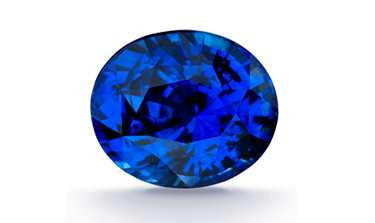
The name "sapphire" can also apply to any corundum that's not ruby, another corundum variety.
Depending on their trace element content, sapphire varieties of the mineral corundum might be blue, yellow, green, orange, pink, purple or even show a six-rayed star if cut as a cabochon.
Besides blue sapphire and ruby, the corundum family also includes so-called "fancy sapphires." They come in violet, green, yellow, orange, pink, purple, and intermediate hues. Some stones exhibit the phenomenon known as color change, most often going from blue in daylight or fluorescent lighting to purple under incandescent light. Sapphires can even be gray, black, or brown.



The world´s most famous engagement ring: Kate Middleton´s and Princess Diana´s sapphire.
Intensely saturated and velvety, rare sapphires from Kashmir set the standard for blue.
A rare and valuable pinkish-orange sapphire named from the Sinhalese for lotus blossom.

Sapphires come in a variety of colors. Preferred sapphires have strong to vivid color saturation, regardless of hue.

Blue sapphires typically have some inclusions, but they generally have better clarity than rubies.

Sapphire is often cut with a brilliant pattern on the crown and a step cut pattern on the pavilion.

Blue sapphires range in size, and large blue sapphires are more readily available than large rubies.

